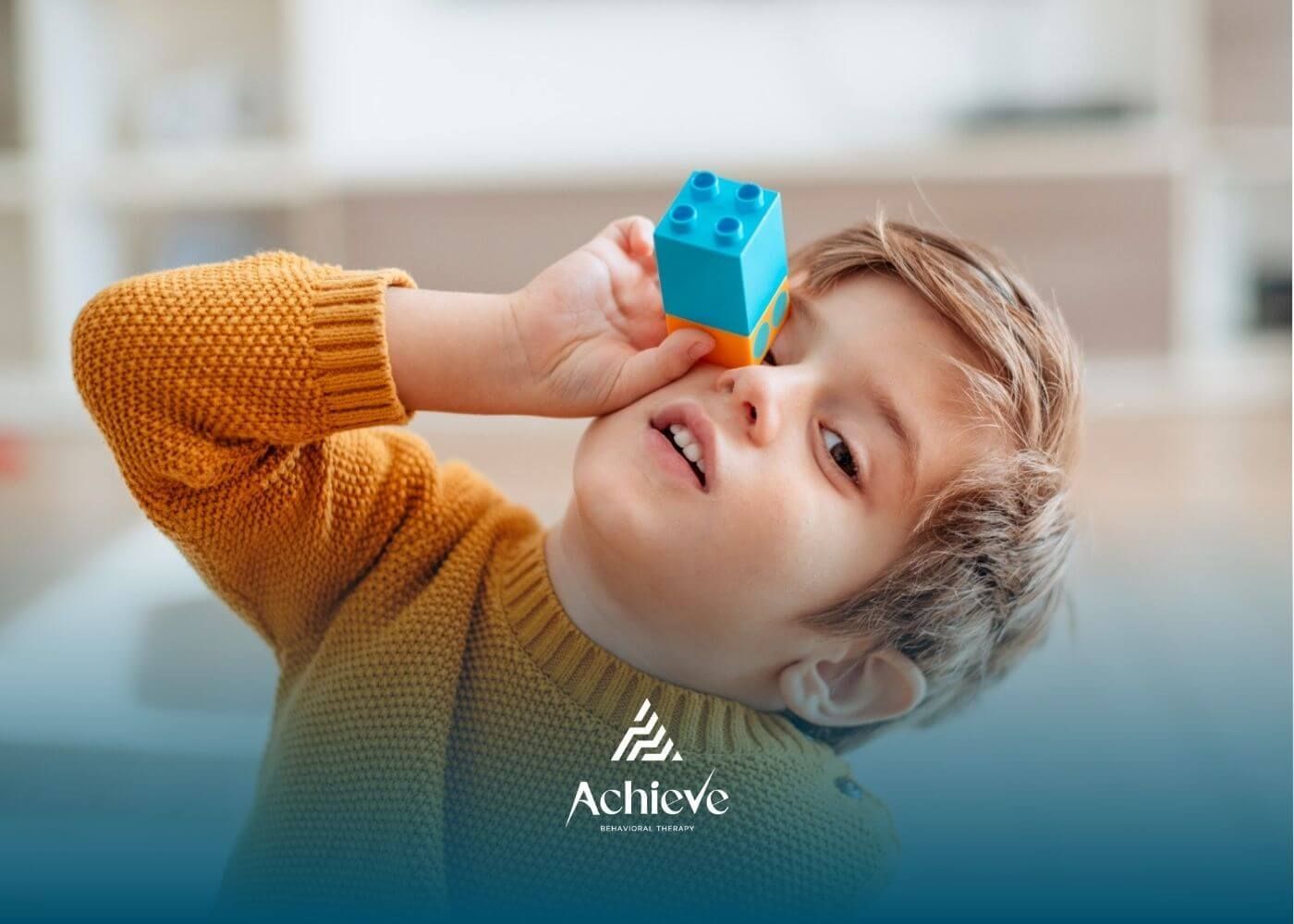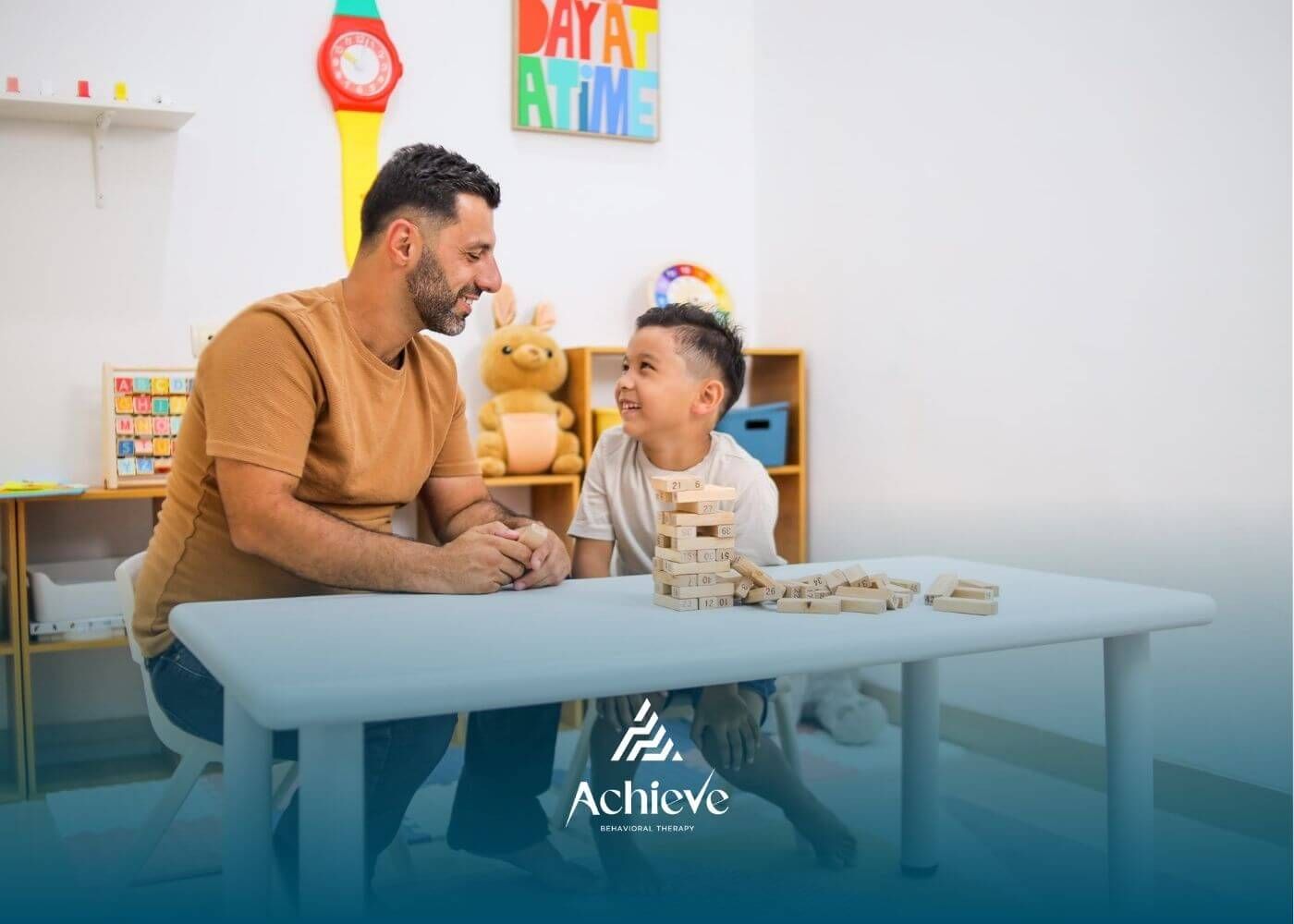Can ABA Help with Sensory Issues? Discover the Benefits

Key Highlights
- ABA therapy offers structured support to assist children in coping with sensory processing difficulties, such as sensory overload and sensory sensitivities.
- It uses techniques to improve emotional regulation and adaptive behaviours, enhancing overall quality of life for children with sensory issues.
- Applied behavior analysis focuses on teaching coping mechanisms, such as sensory breaks, to address sensory processing challenges in daily activities.
- ABA therapy is especially relevant for autistic children, helping manage sensory integration issues while fostering communication and social skills.
- Collaboration between ABA therapists and occupational therapists bolsters holistic care, targeting sensory needs through carefully planned intervention strategies.
Children with sensory sensitivities often feel overwhelmed by things others barely notice. Whether it's the buzz of fluorescent lights, the scratch of a clothing tag, or the chaos of a crowded room, their nervous systems are constantly on high alert.
As a behavior therapist, I once worked with a 7-year-old boy who would scream anytime a vacuum turned on. Through ABA therapy, we created a step-by-step exposure plan, paired with positive reinforcement. Over time, he not only tolerated the sound but could vacuum his own room. That’s the power of personalized support.
Understanding Sensory Issues in Children
For children who have sensory processing challenges, normal daily things may seem hard or confusing. Sensory issues can be a strong dislike of certain things around them or wanting more sensory input. These things affect how they talk with other kids or do school work.
What Are Sensory Processing Difficulties?
Sensory processing difficulties happen when the brain has a hard time figuring out and handling things like noise, light, or touch. These troubles can show up in two main ways. Some people are very sensitive, so normal things feel too much for them. Others are not sensitive enough and need strong feelings to be involved.
For example, a child may think bright lights are too hard to handle, or they may not like certain textures at all. On the other hand, some need to do things like spinning or jumping to meet their sensory needs. This comes from the way their brains mix up or react to sensory input, which can bring a lot of discomfort or may leave them confused.
Children with sensory processing difficulties can have trouble with focusing, keeping up with what they are supposed to do, or making friends. Knowing how to handle sensory stimuli is key in helping them take part in daily tasks. That’s why it helps to teach coping skills and to slowly change the sensory information they get. This can help them react better over time.
Common Sensory Challenges in Childhood
Sensory challenges in childhood might look very different from one child to another. Still, these challenges often make it hard for them to take part in daily activities. Here are some of the common issues children face:
- Sensory Overload: Places with bright lights or loud noises can be too much. It can make it hard for kids to focus or join in.
- Sensitivity to Textures: Some fabrics, food types, or surfaces can bother children. This can make them want to stay away from these things.
- Auditory Issues: Noises that are loud or come on suddenly can scare kids or make them shut down.
- Visual Stimuli: Lots of bright colors or full, messy spaces might be too much for a child’s senses.
These sensory sensitivities can make simple things, like talking with people or paying attention, very hard. It can also get in the way of social interaction and stop normal daily functioning. ABA therapy gives children and their families helpful tools. These tools are to help kids slowly get used to and deal with these sensory challenges as time goes on.
Basics of ABA (Applied Behavior Analysis) Therapy
Applied behavior analysis (ABA) therapy helps people understand and change the way children act. The goal is to bring out good changes for kids, especially autistic children. Therapists use behavior analysis to look for certain acts in children, both the helpful ones and those that do not help with daily functioning. They then make intervention plans that meet each child’s sensory needs.
How ABA Works: Core Principles and Methods
ABA therapy has a set way to help children learn new skills. It uses this plan to teach children how to act in good ways and how to handle things that happen each day. A big part of aba therapy is called positive reinforcement. In this, the child gets a reward or good feeling if they do something right, like using calming steps during sensory overload. It helps the child want to do the good thing again.
The therapy also uses something named task analysis. In task analysis, the actions a child needs to take to handle sensory stimuli are broken down into small steps. This way, they can slowly build up to what they need to do. For example, if loud noises bother a child, they start noticing them at a low volume. Then, little by little, the sounds get louder. Over time, the child learns to deal with the noise and stays calm.
ABA therapy also works on behavior modification. Here, it looks at unhappy or unhelpful actions that come up when there is new sensory input, like tantrums. The aim is to swap those with better actions. A therapist will watch the child and see what things set them off, or what causes stress. Then they make a plan for what will help that child.
All of these ways together give the child a place to try out new skills and practice often. With this support, the child can learn to manage sensory input, have better adaptive behaviors, and use strong positive responses in different situations.
ABA’s Relevance for Children with Sensory Issues
ABA therapy is important for dealing with sensory processing challenges in children. It gives clear techniques that help them handle being too sensitive or not sensitive enough.
With the use of adaptive behaviors, ABA therapists show children how to react in healthy ways. For example, if a child is troubled by bright lights, the therapist might start with gradual exposure. Over time, this helps the child get used to the lights and builds confidence.
The sessions also work on new skills. Children learn how to ask for a sensory break or may use headphones if there is too much noise. These interventions can lower anxiety. They also help with communication and social skills. This lets children deal with their sensory experiences more easily.
ABA therapy helps children become more independent. It turns the way they react to sensory processing into chances for learning and growing.
The Link Between Sensory Processing and Autism Spectrum Disorders
Understanding the link between sensory processing and the autism spectrum can help shed light on what autistic children go through. Sensory sensitivities are common. These often show up when kids react to sensory stimuli like bright lights or loud noises. Sensory processing difficulties can be tough. They may cause behavioral challenges or trouble with emotional regulation.
Overlapping Symptoms of Sensory Issues and Autism
Sensory sensitivities often show up with autism spectrum. Many autistic children have trouble with sensory processing. This can make things like bright lights and loud noises feel too strong for them. These sensory issues make behavioral challenges even harder to handle. So, it is important to spot and understand how these problems are connected.
When caregivers and teachers know about these shared things, they can make better intervention plans. This helps encourage positive behaviors. It also helps autistic children with sensory processing difficulties to do better in their daily functioning.
Why Sensory Support Is Critical in Autism Interventions
Sensory support is very important in helping autistic children. It affects the way they do daily functioning and helps with emotional regulation. When you look at sensory sensitivities and use sensory integration strategies that fit the child, it helps them handle everyday activities. This makes their stress and anxiety go down.
By doing this, you help improve the quality of life for autistic children. It also helps them learn positive behaviors and new skills that make life easier. Good sensory support lets them take part in their social world. They get to have better sensory experiences and build strong connections with others.
How ABA Therapy Addresses Sensory Issues
In ABA therapy, the therapist does functional behavior assessments to find out what makes a child react, like bright lights or loud noises. These things can bring on sensory overload.
Identifying Sensory Triggers Through Behavioral Assessment
Understanding what sensory triggers affect each child is important when you want to help autistic children. Behavioral assessments help spot which sensory stimuli, like loud noises or bright lights, cause problems. By watching how kids react to these things, ABA therapists can make plans that fit their needs.
These intervention plans help with things like emotional regulation and give children coping mechanisms. This way, autistic children can get through daily tasks more easily. Focusing on sensory processing in this way not only helps with difficulties but also boosts quality of life and improves the overall quality of life for them. Recognizing these triggers leads to better daily functioning and positive changes for autistic children.
Techniques Used in ABA to Support Sensory Regulation
There are different ways that are important in ABA to help with sensory regulation. Deep pressure can give comfort and help lower stress in kids who have sensory sensitivities. Gradual exposure is another way that can help kids get used to different sensory stimuli. It does this slowly and in a planned way.
Using reinforcement strategies can help too, for example, giving positive reinforcement for adaptive behaviors. This can help the child feel better and act in a more comfortable way with what is around them. All these methods can have a big effect on daily functioning and improve the quality of life for autistic children.
Integrating Sensory Strategies Within ABA Programs
Using sensory strategies in ABA programs can really make life better for autistic children. When ABA therapists and occupational therapists work together, they can make intervention plans that fit every child’s sensory needs. Adding sensory breaks to therapy sessions helps kids deal with sensory sensitivities, which leads to better emotional regulation and more positive behaviors.
Collaborative Approaches: Working with Occupational Therapists
Collaboration between ABA therapists and occupational therapists is important for meeting the sensory needs of autistic children. When they work together, they use their own skills to improve treatment plans. They design sensory integration strategies that fit each child's daily challenges.
The team spots the types of sensory stimuli, like bright lights or loud noises, that might get in the way of daily functioning. They help create coping mechanisms for these situations. By working together, they help people get a better understanding of each child’s sensory processing difficulties.
This teamwork supports better adaptive behaviors. It also helps to improve the overall quality of life for autistic children. By looking at sensory processing and making plans to help with these needs, both therapists make a real change in the lives of the children and their families.
Adapting the Environment for Sensory Success
Making a sensory-friendly space can help autistic children do better in daily life. Small changes, like lowering bright lights or turning down noise levels, can stop sensory overload. These simple steps let children enjoy good sensory experiences.
Adding different textures and time for sensory breaks is important. It lets kids check their sensory needs in a safe way. Adjusting areas for emotional regulation helps create a place where children can build new skills and talk better.
When you carefully set up a space for their sensory processing challenges, it can lead to better behavior. It also boosts the overall quality of life for children who deal with sensory issues. Every step you take to meet their sensory needs matters for their well-being.
Conclusion
The path to learning how applied behavior analysis can help children with sensory issues is full of hope and new ideas. When caregivers use ABA strategies made just for a child’s sensory needs, they help the child build positive behaviors and do better each day.
These behavior analysis techniques make sensory integration easier and help with emotional regulation as well. In the end, this can make the quality of life much better. When families and professionals work together on intervention plans, there is a better chance for autistic children to get good coping mechanisms and do well in daily life. All these things come together to improve the overall quality of life for them.
If your child struggles with sensory overload, discomfort, or meltdowns triggered by daily life, you don’t have to face it alone. At Achieve Behavioral Therapy, we specialize in supporting children with autism and sensory processing challenges through compassionate, research-based ABA therapy.
Let’s create a personalized plan that helps your child thrive. Contact Achieve Behavioral Therapy today to schedule a consultation and take the first step toward greater comfort, connection, and confidence.
Frequently Asked Questions
Can ABA therapy reduce sensory meltdowns in children?
Yes, ABA therapy can help lower how often kids have sensory meltdowns. It does this by finding out what triggers them and using special ways to help kids better handle how they feel. With regular practice and using these coping mechanisms, children can learn how to deal with things that feel too much. This makes it easier for them to manage their feelings and become stronger when tough situations come up.
How is an ABA plan customized for sensory sensitivities?
An ABA plan is made for each child, especially if they have sensory sensitivities. To do this, the team carries out a careful check to find what causes these issues and how the child reacts to them. The plan uses steps like gradual exposure to things around the child and positive reinforcement. This way, the help is made just for that child, and it can help them do better.
What role do parents play in supporting sensory needs with ABA?
Parents have an important part in helping with their child’s sensory needs during ABA therapy. They can share what things cause problems for their child. They can also use and support the same strategies at home that are used in therapy. Working with the therapists makes sure there is the right kind of help for the child’s sensory processing. Their role makes it easier to meet what the child needs for their sensory processing challenges.
Sources:
- https://health.mountsinai.org/blog/what-are-sensory-processing-differences-and-how-do-they-relate-to-autism/
- https://www.webmd.com/children/sensory-processing-disorder
- https://www.sheffieldchildrens.nhs.uk/services/child-development-and-neurodisability/sensory-processing-difficulties/
- https://pmc.ncbi.nlm.nih.gov/articles/PMC9688399/
- https://www.healthline.com/health/childrens-health/sensory-issues-in-children
Need Support?
We're Here to Help!
Our experienced team is ready to assist you. Reach out today to discuss how we can support your child's development and well-being.
Get started with expert ABA therapy today.














